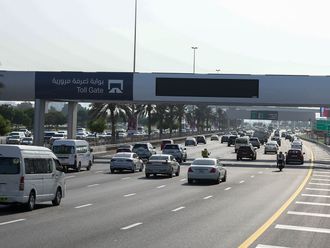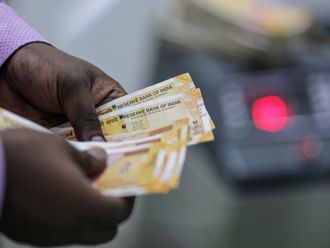
Gulf News interviewed fund managers and researchers from Qatar, Kuwait, Bahrain and Oman on their views about the prospects of their home markets this year. Among the common macro-economic themes that emerge are the stability of oil prices, committed government spending which will act as a stimulus to growth, and the continued global economic recovery.
Local factors, which are unique to each country, also must be considered, according to the experts.
As in the case of Qatar, investment bank and asset management company Amwal's chief executive officer George Shehadeh said the implementation of a series of business-friendly reforms to create a highly conducive business environment — such as reforms in foreign ownership and investment restrictions, labour and immigration laws — will be a crucial factor in the achievement of significant improvements in the competitiveness of its non-energy sector. It is also imperative to expand its global business relationships forged through increased trade, direct investment flows, and technology and human capital transfers.
For Kuwait, M.R. Raghu, senior vice-president of research at Kuwait Financial Centre (Markaz), said strong oil prices alone are not sufficient to lift market sentiments.
"Significant improvement in corporate earnings will be very essential, especially among banks that are witnessing large scale provisioning even after two years of crisis," he said.
Raghu added that regulatory development will be a strong trigger in 2011 with the Capital Market Law gaining speed.
Jitesh Gopi, head of research at Securities and Investment Company (SICO) of Bahrain said the lack of liquidity will remain as a major challenge for the Bahraini market.
On the the regulatory front, the Central Bank of Bahrain's announcement of its intention to stop managing the Bahrain Stock Exchange as it focuses only on its role as a regulator should be seen as a step in the right direction.
In Oman's case, the eighth Five Year Development Plan (2011-15) and Vision 2020 are expected to aid in accelerating developmental efforts to achieve higher non-oil sectors contribution in the GDP, according to Lo'ai B. Bataineh, head of Investment Management Group at Oman Arab Bank.
On the market side, he says, the launching of ETFs and expected revival of IPOs are likely to boost market confidence. "[A] Healthy macro-economic scenario, attractive yields and lower volatility, makes Oman market lucrative. MSM has the highest dividend yield amongst the regional markets, giving an edge over others," he continued.
But he also pointed out increasing global commodity prices and weakening of US dollar is pulling up inflation across GCC, and Oman is no exception to that. "We believe due to increasing inflation the company earnings will subside, which will adversely affect the stock prices and eventually the returns," he said.
GULF NEWS: What are the prospects for your home stock market in 2011?
Qatar: In [line with] international investors' increased interest in Qatar as a result of its winning the bid to host the Fifa World Cup 2022, the Qatar Exchange (QE) has been setting itself up to become a more attractive capital market centre for regional and international portfolio managers.
Key factors favouring this trend include:
1. The decision by the QE to expand trading hours.
2. Improved efforts in investor relations spearheaded by some of Qatar's top listed companies.
3. The anticipated adoption of rules to promote the QE to MSCI Emerging Market status — from Frontier Market status.
4. Efforts by the QE to promote more listings by local businesses.
As the Qatar Exchange and local public companies continue on this path, Qatar could see increased portfolio flows, liquidity and visibility in 2011 and beyond.
Oman: Since the beginning of July 2010, we saw that the Muscat Securities Market 30 (MSM30) index started a positive upward trend gaining 682.55 points to end the year at 6,754.92.
Thus during the first half of 2011, MSM30 index is expected to face some corrective movements mainly driven by some profit booking after 2010 fourth quarter results and 2010 dividends.
The index will face a strong resistance level at 6,960 and if the index crosses this level the next resistance will be at 7,022. Otherwise, as mentioned above, the correction movement will be around the pivot point at 6,728.77. In terms of moving average we expect that MA100 will cross up the MA200 in the first quarter of 2011.
We expect that MSM30 index will witness a recovery, especially in the second half of 2011, supported by both banking and service sector. In the mid of 2011 the yearly revision of MSM30 index will happen and accordingly index components will be reshuffled. We expect Al Nawras will be added which will affect the market trend.
On the other hand, we expect that construction companies will get investors attention as these companies are beneficiaries of the implementation of large government projects in the Sultanate.
Bahrain: Bahrain's market is expected to perform better compared to a slightly 2010 negative performance.
The improvement in the broader Bahrain economy was not evident in the index's 2010 performance because of an under-representation of core sectors among BSE listed companies, and continuing concerns on the health of parts of Bahrain's financial industry, and more specifically the investment banking sector.
We expect this anomaly to partially correct during 2011, as investors start focusing on some of the fundamentally strong listed companies, though concerns on some of the previously active investment banks and liquidity may dampen positive sentiment.
Kuwait: We have a positive outlook on Kuwait in 2011 due to strong macro economic indicators and revived corporate earnings health.
One area of concern is in valuations as the market is trading at a PE (TTM) of 20x which seems excessive in our view. Market liquidity, or the lack thereof, is also a concern.
Kuwait's economy is slated to have grown at about 3 per cent in 2010, which would be half the historical average. This growth is expected to bump up to 4.5 per cent in 2011 on high commodity prices, which will maintain the fiscal balance at about 21.5 per cent of GDP.
Additionally, the country has enacted a $107 billion (Dh393 billion), five-year economic development plan meant to stimulate various economic sectors.
On the corporate earnings side, we expect corporate earnings to resume a more stable course, growing at about 32 per cent. Value traded is down 55 per cent so far in 2010 (to November 2010), a further contraction from the 44 per cent decline seen in 2009.
GULF NEWS: Which sectors are going to do well? What would be your top five picks for the first quarter of 2011?
What are the prospects for your home stock market in 2011?
Qatar: Most of the listed companies should benefit from the increased spending. Banks, companies involved in infrastructure, real estate and related services are likely to be among the key beneficiaries. Furthermore, we see many undervalued stocks that are both under-owned by foreigners and under-covered by sell side analysts. We think the World Cup win should increase interest in sell-side banks to cover more Qatari stocks. A potential increase in foreign ownership limits could speed this up faster.
Amwal typically does not comment on specific names it covers. But looking into the first quarter, we focus on those companies that demonstrate strong year-on-year earnings growth with any potential for surprises on the up-side.
We also take into consideration the impact of international market sentiment and energy prices on the Qatari market in the short term. The Amwal investment team used this approach to produce the best fund performance in Qatar in 2010, vastly outperforming its peers and the market index. Our Qatar Gate Fund's top positions include:
- Industrials such as Industries Qatar and Qatar Fuel
- Banks such as the Commercial Bank of Qatar, Qatar National Bank and Qatar Islamic Bank.
We adjust our holdings periodically based on any change in earnings outlook or valuation. The above list has changed and may change from month to month.
Bahrain: The performance of the Bahraini stock market will continue to be driven by the financial sector's performance, and news related to key banking institutions, despite the addition of Alba. This sector's concerns have so far overshadowed the consistent performance of non-financial stocks, making the latter undervalued and attractive for potential investors.
However, any sustainable rally in the market is linked to a recovery in the GCC markets, mergers among these entities or the improvement in operating conditions of investment banks, and liquidity on the exchange.
We expect some of the fundamentally strong sectors such as commercial banks, telecoms, and manufacturing to do well, as investors will have more clarity on these sectors.
Some of the obsolete investment banks will continue to face challenges as they try to re-model their presently defunct businesses to provide investors with a new and convincing vision.
However, we cannot rule out the slim possibility of rallies in some financial sector stock prices (investment banks and some Sharia compliant banks) primarily due to their cheap valuations and a possible improved outlook on successful reorganisation initiatives.
We like fundamentally strong companies such as Batelco, Alba, Seef Properties and AUB. Though there are other well performing smaller-listed companies, liquidity remains a major issue for them.
Oman: Instead of providing top stock picks, we are recommending sectors. The banking and service sectors are our top picks. Some sector-specific factors, however, need to be kept in mind:
Banking Sector: We remain cautious on banks provisioning for the fourth quarter of 2010. However, for the year 2011, the growth rate in provisioning will slow down.
Second, more petroleum exploration activities planned for the year and government's consistent investment expenditure will gradually translate into higher credit off-take in the medium to long term. Moreover, conservatism adopted by banks will also take a backseat in 2011.
And finally, as most of the local banks have reached their stipulated limit of personal loans, we thus anticipate corporate lending to be more active, which might lead banks to compromise on yields. A recent surge in the low cost deposit base should keep the funding costs sticky over the medium term, thus margins will be flattish.
Cement Sector: Tender announcements in 2010 worth 3.7 billion riyals (Dh35.1 billion) added new impetus to the quest for economic development.
Moreover, a sufficient number of mega-projects running in the country will boost total cement consumption.
Stiff competition from neighbouring countries (that is, the UAE) is expected to continue over 2011 leading to correction in local cement prices and pressurizing the local cement companies' market share.
Finally, about 20 per cent drop in local cement prices is expected to be seen in 2011 in order to match the landed cement prices at 23-24 riyals per tonne.
Telecom Sector: Broadband internet is expected to be a high growth area in Oman. Competition, with regards to pricing as well as services, is expected to heat up with Nawras entering the fixed line services and with the entry of several new mobile virtual network operators
Tourism Sector: Tourism is set to play a major role in the Sultanate's overall development and to be a source of employment. The Sultanate's plan is to double hotel capacity by 2015, which in turn will provide the much needed support to the economy
Oil Products Marketing Sector: When it comes to aviation, as per official figures in first 10-months of 2010, passenger traffic and number of flights in Sultanate increased by 25.5 per cent and 22 per cent respectively, compared to same period previous year.
The increase in passenger traffic, along with new routes being added by Oman Air, indicates the need for more refuelling.
Also, several refuelling agreements with numerous airlines will benefit the oil product marketing sector.
Moreover, with new international airports being announced, as well as new domestic airports, the requirements for refuelling are set to increase.
Kuwait: Being a asset management company with a buy-side research focus, we don't provide stock picks or stock specific recommendations.
In an environment of an improving economy and oil price, I feel that cyclical stocks should be preferred over defensive. Also, given the uncertainty in earnings, high dividend paying stocks should be preferred as only companies with strong operational earnings and liquidity can afford to pay dividends.
In terms of expected performance for 2011, we expect financial services and telecoms to exhibit healthy growth while banking is expected to maintain a decent growth trajectory.
In terms of investment strategies, I feel that investors can use volatility to formulate portfolio strategy. Kuwait market responds quite nicely to volatility.
As you may appreciate, an increasing volatility is accompanied by a falling market and vice-versa.
We measure volatility more comprehensively using our proprietary model called MVX (Markaz Volatility Index). The MVX for Kuwait declined by 49 per cent in the first quarter of 2010 (the market rose by 8 per cent), MVX increased by 38 per cent in the second quarter (the market fell by 13 per cent) while the MVX fell by 24 per cent in the third quarter and the market increased by 7 per cent.
Hence, one can clearly notice a negative correlation between risk and return. We believe this can be an interesting portfolio strategy.
We also feel that Kuwait market can be a yield play. In Kuwait, telecoms have maintained dividend yields between 3 per cent and 7.5 per cent between 2007 and 2009. Banks have managed yields of 2-4 per cent in the same period.
Dividend yield plays can be appropriate for investors requiring a secure cash flow.
Moreover, when market uncertainty results in risk aversion and a lack of capital gains, investing in high dividend yielding companies can compensate for the loss in capital gains.
In markets like Kuwait, which are heavily skewed towards retail investors, the majority of trading is focused on highly liquid stocks as most investors tend to aim for short-term trading rather than longer-term, hold positions.
Retail investors tend to shy away from lower liq-uidity stocks as it can be difficult to execute trades on such shares at desired prices.
However, low liquidity stocks can be a good play, especially in distinctly bear markets where trading is pushing stocks downwards.
In such environments, it may be more prudent to take positions in lower liquidity stocks which may hold up in downward markets.












